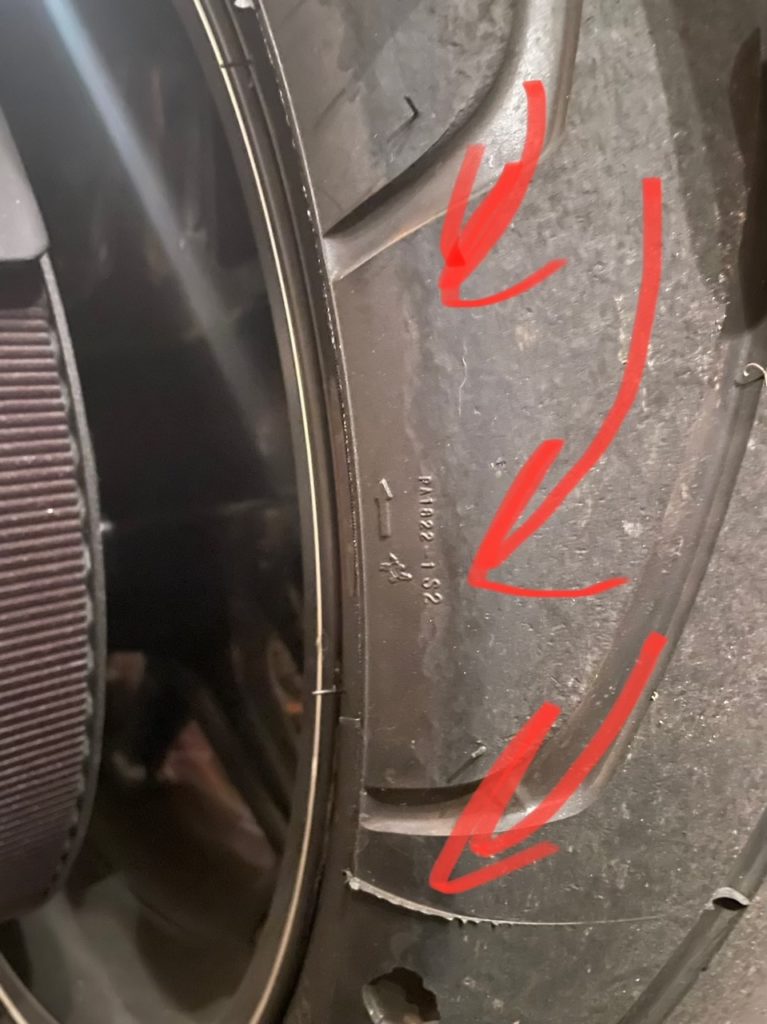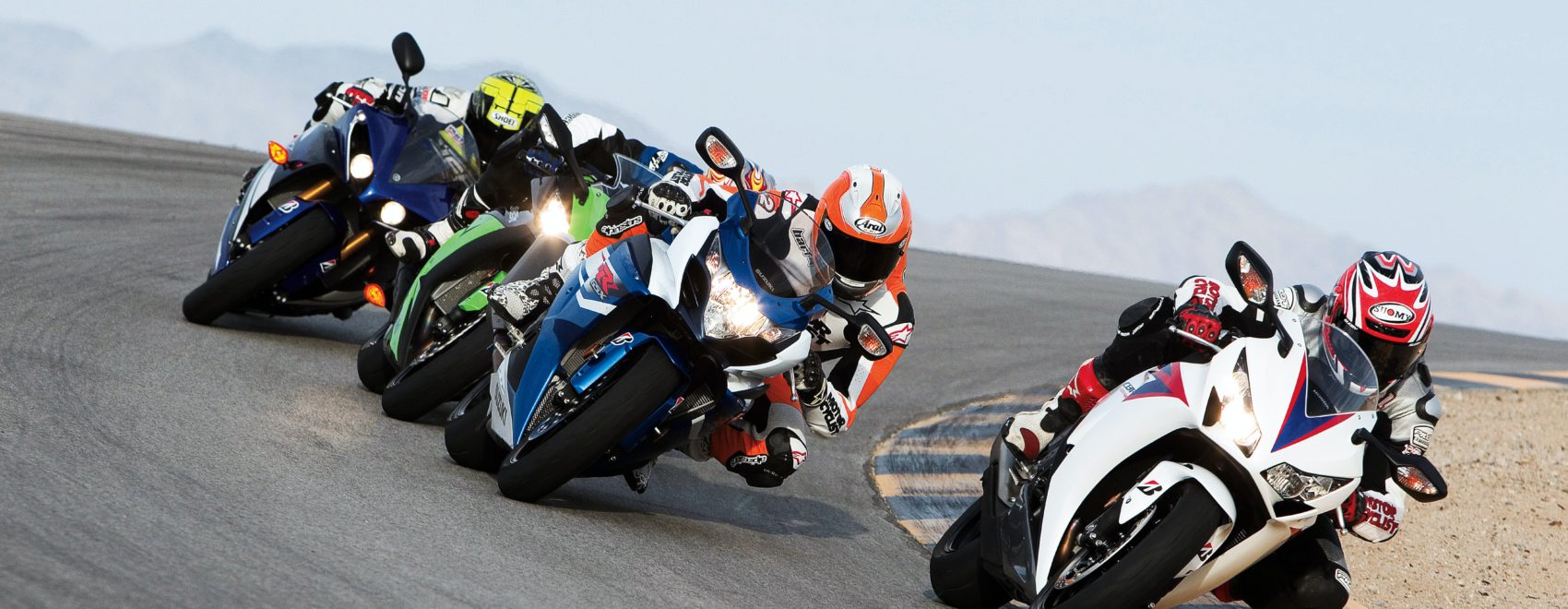A Beginner’s Guide to Track Days
If you go to the MotoJustice website, you will see plenty of pictures of Lead Attorney, Jacque Touzet, riding one of his track bikes. There is a reason for that: when you deal with motorcycle accidents that happen out on the open road, the track seems like a good option for riding safely at speed. And if you are contemplating taking your bike out to the track but your husband, wife, or significant other thinks it’s a bad idea, just explain to them that riding at the track is safer than riding to the grocery store to get a pack of gum. At the track, all bikes must pass “tech” before going out on the track with other riders. That assures that the man or woman riding next to you isn’t leaking oil or having brake issues that could affect your safety. Everyone has to have the proper equipment, adhere to track rules, including how to interpret flags, and follow Track Marshall guidelines. Most importantly, you won’t have to dodge distracted and impaired drivers left and right while you’re trying to have a good time.
How to Find a Track Day
So how do you get out there? First of all, the old days of having to sign up for a race in order to get track time are over. If you wanted to ride at a track when I was a youngster, you had to be a registered “racer”, have a track number, and pay the entry fees. In 2022, you have more options. Many local tracks have “track day” companies that rent the track, pay the insurance, and essentially rent spots for riders to fill. Find your nearest race track, visit their website, and look for the next track day on their calendar. The wonderful thing about track days is that most companies split the riders up into groups based on experience levels.
How does a motorcycle track day work?
You would not want to be out on track trying to figure out which gear to be in at a certain turn when you have an AMA rider out there, fully knowledgeable of how to ride every single turn, and simply trying to get in practice for his or her next race. That is not very enjoyable for either rider and can be dangerous. So, most track days are split into classes with “A” riders being the advanced group. “B” riders are intermediate, and “C” riders are newbies. It may seem harsh, but the classing systems work and they make the days MORE enjoyable, not less. If you are a beginner rider, it can be intimidating to get passed at full throttle, only inches between bikes, by a pro rider. In fact, it can be downright terrifying. But, if you are in the “C” class, that won’t happen since you are with other riders that are learning their bikes or the track and doing so without hindering faster riders.
The classes usually have different rules so research before you sign up. If you find a typical track day company split into the A, B, and C grouping, the A riders can pass anywhere on the track and are expected to know all turns and maintain a decent speed. B group riders are often allowed to pass on the straight and in designated turns deemed safe for intermediate-level riders. The B group is also utilized by riders that may be A-level riders, but choose to ride smaller displacement bikes. So, the A-level rider riding a 125cc Aprilia may opt for group B since, despite her skill, she does not want to impede A riders that may be on literbikes.
The C group is typically reserved for new riders and often has “control riders” that ride with them to assure safety. Control riders are often A or solid B riders that volunteer their time out on track in order to get some free track time with the A riders. If a particular track day company does not utilize control riders, they often have strict rules about passing. Most C riders are instructed to leave plenty of room when passing, only pass on the long straights, and no passing in turns. This ensures that newer riders who are still trying to learn how to “get a knee down” don’t get passed in a corner, freak out, and take out the other riders around them and themselves. It is a smart system and one that works.
What kind of motorcycles can you bring to the track?
What about the bike?? Well, another great thing about riding at a track is that many have companies that rent bikes and leathers. Before Covid-19, many used to rent helmets and gloves too, but they stopped that during the pandemic. Check with your local track about availability. If you rent, I always recommend getting the insurance they offer just in case you have a mishap. Choose a bike that works with your skill level; a nice 300 or 400cc bike will be fun and easy to ride. If you have never ridden on a track, skip renting the BMW S1000RR until you get more experience. If you want to bring your own bike to the track, that is a good option too, but I would skip bringing out your fully bagged Honda Goldwing. Most bikes would be fine, but a chopper with 10’ long forks probably won’t pass tech after everyone stops rolling on the floor laughing. You wouldn’t bring a soccer ball to a pick-up basketball game so bring a bike to the track that makes at least nominal sense.

If you have a naked bike like a Ducati Monster, it won’t perform as well as a fully faired track bike with a nice windshield, but if it has decent power and tires, it will make for a fun track day bike. Try and pick a bike that doesn’t have too much of an upright or leaned back seating arrangement since track speeds can approach triple digits and wind plays a factor on the long straights. And, turns are much easier to negotiate when you aren’t dragging footpegs that are better for a Sunday drive than leaning over in a turn at the track. If you bring a sportbike, you can practice until you get to the amazing moment of dragging a knee puck for the first time. It is something you won’t forget and will work hard to maintain once achieved. You will also learn just how far a sportbike can lean over and how wonderful modern tire technology is. If you think you are leaning over far enough, think again. Your nerves often tap out before the “chicken strips” on your tires get scraped off!
What about “Tech” and what kind of gear do I need?
If you’re bringing your own bike, then be ready for early morning tech on the first day of riding. Please don’t pay for a day at the track and show up thinking you can just show up when you like and head out with the other rides. All track day companies require that all riders show up bright and early to have bikes, helmets, gloves, boots, and leathers inspected. Here is a link to a company that rents track space locally, and they have a comprehensive list you can follow.
Please note the big issues like wiring oil drain plugs, oil filters, and oil fill caps. Ever heard of “Water Wetter”? Well, do some googling. And keep in mind that not only the style/rating of your helmet is important, but the age. I have seen riders turned away despite having the full list of requirements complete because the helmet they brought to tech was over a decade old! Even if it doesn’t have a scratch on it, helmets have a lifespan, and track day companies have to adhere to stringent safety guidelines in order to have insured events. Don’t bring your dad’s vintage helmet from the ’70s, even if it looks “totally cool” or brand new. You might just flush a full day of track rental down the toilet.
The lawyers and riders at MotoJustice love bikes and we love that track day allows riders to fully enjoy the maximum potential of their motorcycles while stressing safety. A day at the track ticks all the boxes and is a real kick in the pants for both seasoned riders and beginners! What we have noticed is that a good day at the track takes all of the ‘piss and vinegar’ out of you. Don’t be surprised if while trailering your bike home after a great day of riding, you have cars blowing the horn and passing you while trudging in the slow lane. We guarantee the need for speed will be gone for a least a few days!

